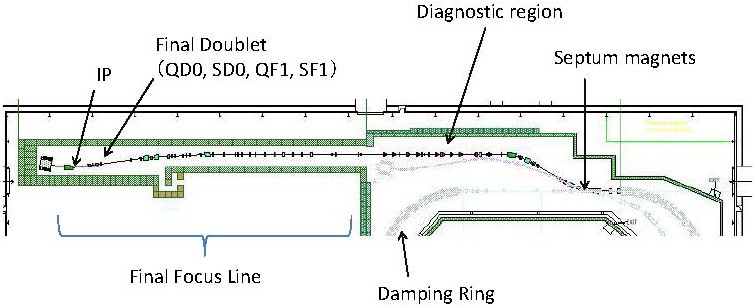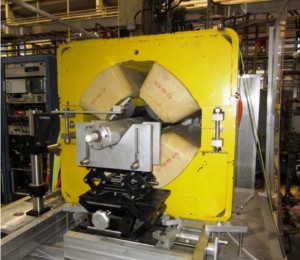From the evening of Monday, 15 October, the autumn beam operation at KEK’s Accelerator Test Facility (ATF) has been back in business after two months of shutdown in summer. In this operation period, we will have two ATF2 dedicated runs: a two-week run in November, and a four-week run from the end of November to December, to make sure we can meet the performance goal of squeezing down the size of colliding beams to the ILC requirement. ATF2 is a final-focus test facility at ATF to verify local chromaticity correction and assure stable nanometre-beam operation, aiming to achieve 37 nanometres of vertical beam size for the same chromaticity as required for the ILC.
In my column today, I would like to mention some of the important improvements made during the shutdown. One of them is an improvement of the beam size monitor called Shintake monitor. The Shintake monitor is a beam size monitor (BSM) set at ATF2’s interaction point that uses laser interference fringes as target. These are being developed by the University of Tokyo. It is a valuable beam-tuning tool, and is the only device capable of measuring a beam size of less than 100 nanometres.
In the previous operation period, we have measured a beam size of 150 nanometres. But some people think that it actually could have been smaller than that. There was a possibility that the BSM did not perform at the designed resolution. One of the possible causes was laser path misalignment. For the autumn operation, the team have adjusted the lens set-up to improve the balance of the BSM focal point. The team has also made numerous improvements such as matching the path length of upper and lower lasers, and changing the handling concept for laser crossing angle control. Those improvements will greatly contribute to reduce the modulation uncertainty.
Another possible cause that might have intervened in the measurement of the small beam is multi-pole error at higher orders, unwanted effects in magnetic fields at the final focus beam line. To squeeze the beam into a very small size, we use various multi-pole magnets, such as quadrupole, sextupole and dipole. For the autumn ATF run, we have increased the numbers of skew sextupole magnets from one to four for the correctors. Also, we are planning to replace the final H-focusing quadrupole magnet with much fewer higher-multi-pole components, which are being shipped from SLAC. This replacement magnet was used for the PEP II experiment, which has a larger aperture. We expect that this replacement will facilitate the beam tuning at the design optics. ATF has almost same design optics as the ILC, so demonstration of the bean tuning at ATF is quite important for us.
In addition to the technological improvements, the operation framework for ATF was reconstructed by our scientists. A new position, the ATF2 tuning coordinator, was created to clarify the decision-making process on beam operation. For the autumn run, Kiyoshi Kubo of KEK takes this role. He will communicate with two beam-tuning experts, Glen White of SLAC, and Toshiyuki Okugi of KEK, accommodating the individual leaderships and ATF2’s responsibility.
Many improvements have been made from the last run, and we are aiming to realise a beam size less of than 70 nanometres. This is our first target beam size, and we are expecting to squeeze down further. Stay tuned for news from ATF2!




Recent Comments